SuperCircle, a textiles recycling startup, has cracked the circular economy code for fashion brands. Meet…
The post Best of: Earth911 Podcast: SuperCircle Breaks the Textiles Logjam appeared first on Earth911.

SuperCircle, a textiles recycling startup, has cracked the circular economy code for fashion brands. Meet…
The post Best of: Earth911 Podcast: SuperCircle Breaks the Textiles Logjam appeared first on Earth911.
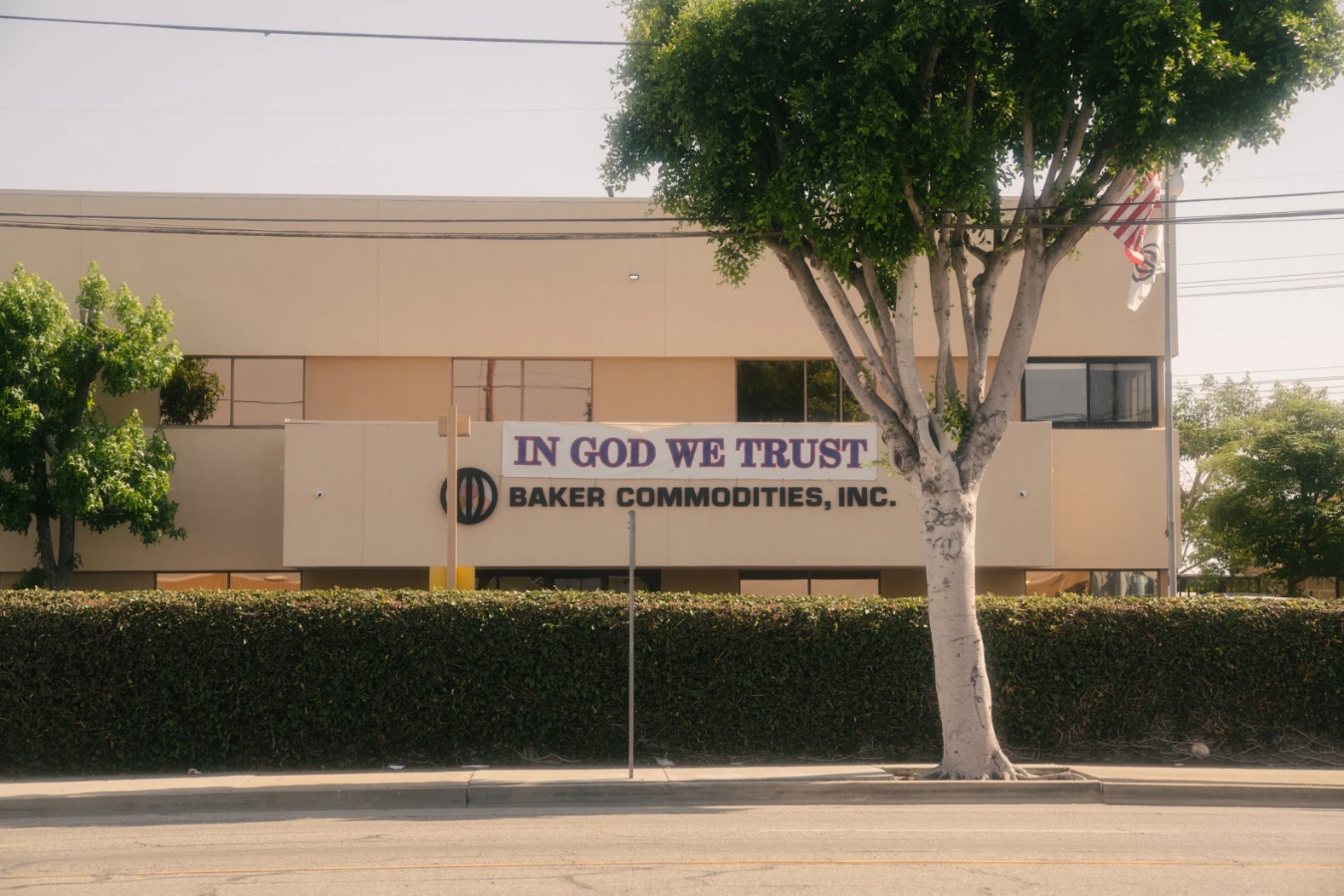
This story was originally published by LAist and is republished with permission.
Tucked along Bandini Boulevard in the city of Vernon are the headquarters for Baker Commodities Inc., a company that employs 900 workers across the U.S. and is home base for some of the grisliest industrial work in the country.
Behind the nondescript walls of its campus along the L.A. River sit machines used to grind, cook, and press leftover pieces of cows, pigs, and chickens. These remains — and, sometimes, entire carcasses — are delivered on semitrucks from butcher shops, grocery stores, restaurants, slaughterhouses and livestock farms. A worker then pushes them into a pit with a tractor and, through a process called rendering, they’re turned into fats, meat and bone meal, and hides.
These materials are recycled to make scores of everyday products, including soap, pet food, makeup, and leather goods. The long-running industry plays important roles in reducing food waste.
For decades, residents in surrounding neighborhoods have complained of putrid dead animal smells. In 2017, community pressure compelled the local agency that oversees air emissions, the South Coast Air Quality Management District (AQMD), to adopt a rule to mitigate odors from Baker and a handful of other rendering plants. Among other requirements, the rule forces these companies to post signs indicating where residents can report odor issues — a demand some plants lobbied against. Then, in September 2022, the agency shut down Baker, citing repeat violations of its odor mitigation rule.
At the time, community members and elected officials celebrated the closure as a win. But what many don’t know is that the company has partially reopened and is waging an intense legal battle against AQMD. After AQMD shut it down, Baker filed a lawsuit against the AQMD in L.A. County Superior Court. Baker claims the company was not in violation of the odor mitigation rule and that it was treated unfairly. Baker also demands that the shutdown order be tossed out and aims to bar air regulators from shutting it down in the future.

LAist spoke with dozens of local residents and reviewed odor complaint records, violation records, notices to comply, and inspection reports to piece together how the rendering of dead animals at Baker has impacted surrounding communities.
We found that since the odor mitigation rule went into effect in 2017, AQMD has issued 12 violations and five notices to comply to Baker. Eight of them were for violating the odor mitigation rule. The rest were for failing to comply with permit conditions and other requirements. Three of the violations are still pending.
LAist also found 111 odor complaints identified by the person reporting the smell or by AQMD as being tied to Baker between August 2019 and late last week. These complaints came from homes, local schools, and businesses near Baker’s headquarters.
In addition, Baker failed to store animal remains within four hours of delivery, leaving them out to fester and violating AQMD’s rules, according to the agency’s attorneys — and it did so six times between August 2019 and January 2022. An AQMD inspector reported Baker violated AQMD rules that require surfaces exposed to animal matter to be washed down at least once per working day, according to his sworn written statement filed in Baker’s court case. The inspector said he saw strings of animal matter dangling on grates at the company’s headquarters.
Plus, in Baker’s unloading zone for animal remains, broken concrete or asphalt was present in March and April 2022, according to AQMD’s attorneys — a problem that officials at the agency say can cause water to pool and smells to fester.
We should note that Baker has disputed AQMD findings in the latter three items in court filings.
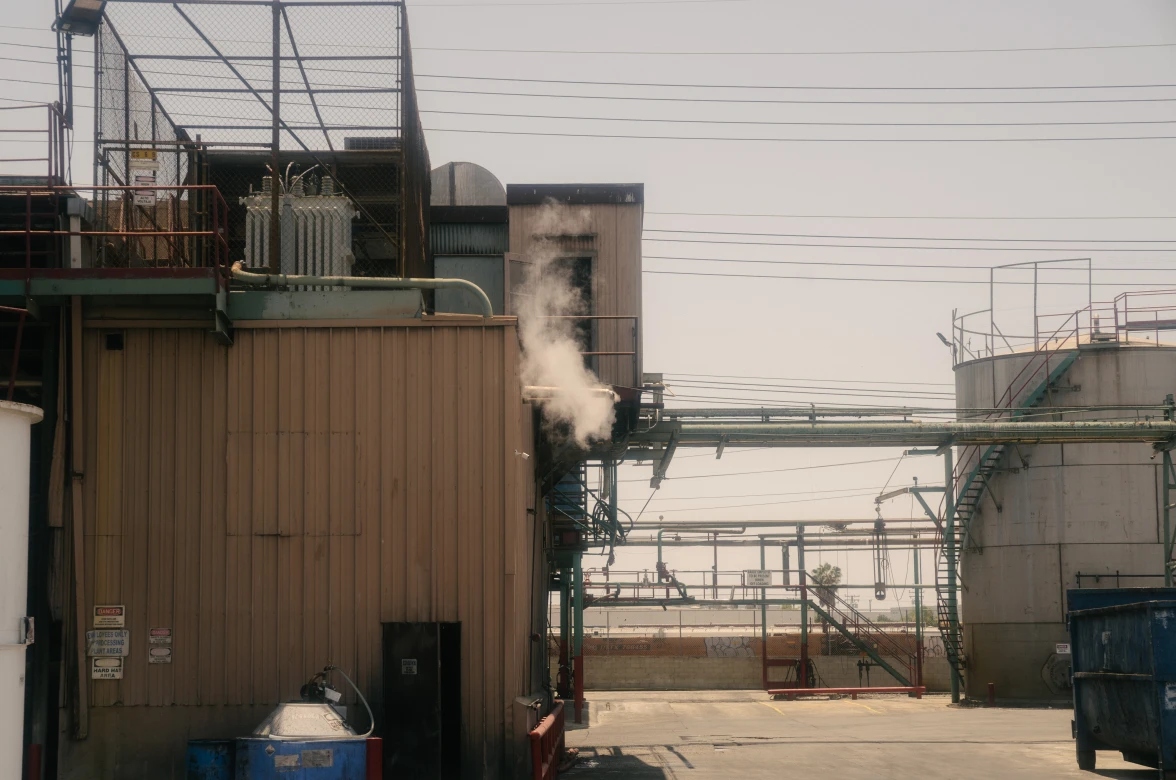
In the year since AQMD ordered Baker to shut down, residents say the odors are less intense and less frequent — and AQMD complaint records associated with the company show a dramatic drop in reported smell problems. The shutdown lasted nearly nine months, until the company petitioned the hearing board and was granted permission to work in a limited capacity, doing trap grease and wastewater treatment — but not rendering animals.
Many community members were worried to learn from LAist that the court may allow the company to fully reopen and return to rendering livestock and poultry without making long-term changes to the way they operate.
A review by LAist also uncovered details of the steps Baker has taken to try to get back to running at full scale in Vernon. The rendering company submitted 125 legal filings in its battle against AQMD over a 12-month period, arguing that it’s in compliance with the odor mitigation rule. In that time, it’s had two law firms working the case, which calls for $200 million in damages from the government agency for lost revenue, the disclosure of trade secrets and other items. Its current legal team at DLA Piper — a top-ranking, multinational law firm — includes Angela Agrusa, who specializes in brand-crisis litigation and has represented comedian and actor Bill Cosby and Chipotle, among others.
“The fact that Baker Commodities would come at an agency that is really intended to protect the public’s health is not just unfortunate, but it is despicable,” said Angelo Logan, who grew up in the nearby city of Commerce and returns weekly to visit his mother. Logan currently serves on the White House Environmental Justice Advisory Council and learned of the litigation from LAist.
Cudahy Councilmember Elizabeth Alcantar, who lives about 3 miles away from Baker, was also unaware of the legal fight until LAist’s reporting.
“It’s absolutely concerning to see that happen,” she said.
Alcantar grew up in Cudahy and says she and her family have endured the stench of rotting flesh for as long as she can remember. She was shocked to hear Baker is pursuing legal action that will cost taxpayers money, instead of addressing community concerns.
“It’s going to take AQMD’s time and funds away from what they should be doing, which is enforcement,” Alcantar said of the litigation, explaining that the community has been under duress for years due to foul odors. “[W]e are here, simply wanting to breathe clean air.”
Baker’s assistant vice president of public relations and legislative affairs, Jimmy Andreoli II, declined multiple interview requests. Agrusa, Baker’s lead attorney, did not respond to our requests for comment.
In an emailed statement Andreoli said, “While we cannot comment on active litigation, we are dedicated to finding sustainable ways to support California’s food production and restaurant industries with continued strict adherence to local, state, and federal environmental laws.”
“Some of our business operations have been approved to resume,” said Andreoli, who is the grandson of Baker’s 96-year-old CEO, James Andreoli. Jimmy Andreoli II added that they look forward to finding long-term solutions with AQMD.
Baker’s lawsuit against AQMD is still pending. Later this month, if a settlement isn’t reached beforehand, an L.A. Superior Court judge is scheduled to decide whether the rendering company can reopen at full capacity. The judge will also rule on the $200 million in damages Baker is seeking, as well as its call to keep AQMD from shutting it down in the future.
If Baker succeeds in court, interviews with community members suggest it could further erode the relationship between the city of Vernon and local residents across Southeast L.A., many of whom are grappling with odors on top of other environmental issues.
Many people who live in or near Vernon have no idea that they live close to four rendering plants that process everything from fat, to livestock, to the remains of cats and dogs. The city, which is just 5 square miles in size, is also home to at least 40 meat processors, which buy meat from slaughterhouses to prepare items found at grocery stores, like sausages and steaks. There are also six slaughterhouses within 1 mile of Vernon’s city limits.

At some places, silos and smokestacks hint at what’s happening inside, along with flocks of seagulls hovering far from shore. But, for the most part, these businesses are tucked behind bland metal sheets and concrete walls.
Baker itself is sandwiched between the L.A. River and several train tracks. The rendering company has been in Vernon since the 1940s. But after AQMD determined that Baker blew a deadline to seal off its rendering operations to keep potential odors from escaping in spring 2022, the agency’s legal counsel moved to shut it down.
AQMD’s hearing board, which enforces the agency’s regulations, gathered to vote on the shutdown in September of 2022. Before reaching a decision, the board held a hearing, which LAist found little media coverage of at the time. It provided a rare look inside Baker’s headquarters.
Over a span of three days via Zoom, attorneys for both parties peppered an AQMD inspector with questions.
In 2022 inspector Dillon Harris testified that he visited Baker nine times. He documented hooves and other animal bones strewn across the floor, overflowing from a large trash bin. He spotted a trough with built up blood, animal fat, and wastewater. He said he saw staff dumping sludge — a thick, pancake batter-like mix of liquid and solid animal remains — from trucks into open-air pits. Baker, he said, also left equipment doors and panels open, which are supposed to be kept shut to trap possible smells, and employees dumped expired clams, shrimp and ground beef into an exposed container.
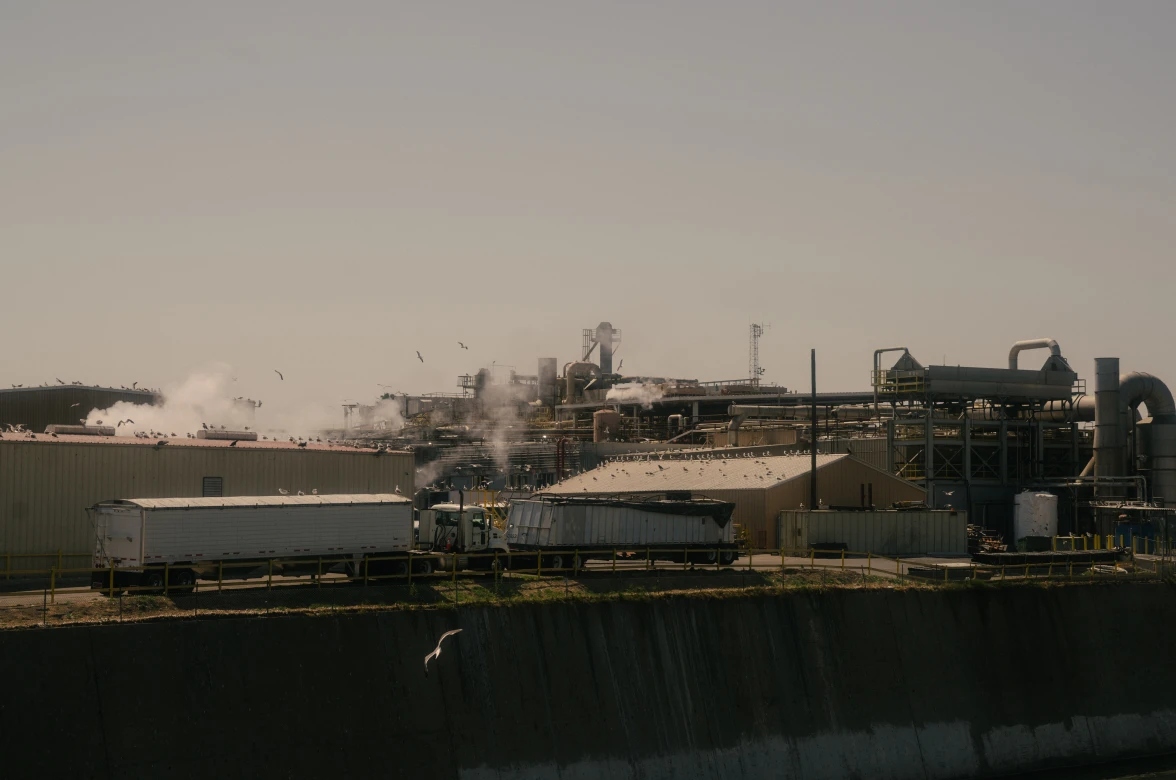
During the hearing, dozens of photographs capture Baker’s facility.
[Caution: these links go to images of the photos displayed on video in hearings]
In them, rib cages can be seen among a heap of animal parts, pools of blood-colored liquid are shown in multiple locations, a drain is backed up and surrounded by dead animal debris. Harris, the inspector, also captured images of raw animal material leaking out of the rendering equipment. Baker has argued that photos shown during the hearing should be sealed from the public’s view because they contain trade secrets that competitors can now access.
The Andreoli family, which has owned Baker since the 1980s, spoke at the hearing and disputed Harris’ findings. Jimmy Andreoli II said he visited the Vernon facility a week earlier and saw “a wash truck that was moving throughout the facility and washing down various roadway surfaces.”
Baker attributed some of the inspector’s findings to human error. Jason Andreoli, who was identified at the hearing as Baker’s general manager, said the company put up signs reminding staff to keep the doors closed. “And we also put a policy in place that if they are left open, there’s gonna be disciplinary action,” he said.
Several hearing board members appeared mystified by Baker’s claims that the company was in compliance with AQMD rules.
“Every picture virtually that we see is of equipment that is absolutely filthy,” said the late Dr. Allan Bernstein, one of the hearing board’s voting members who died last spring.
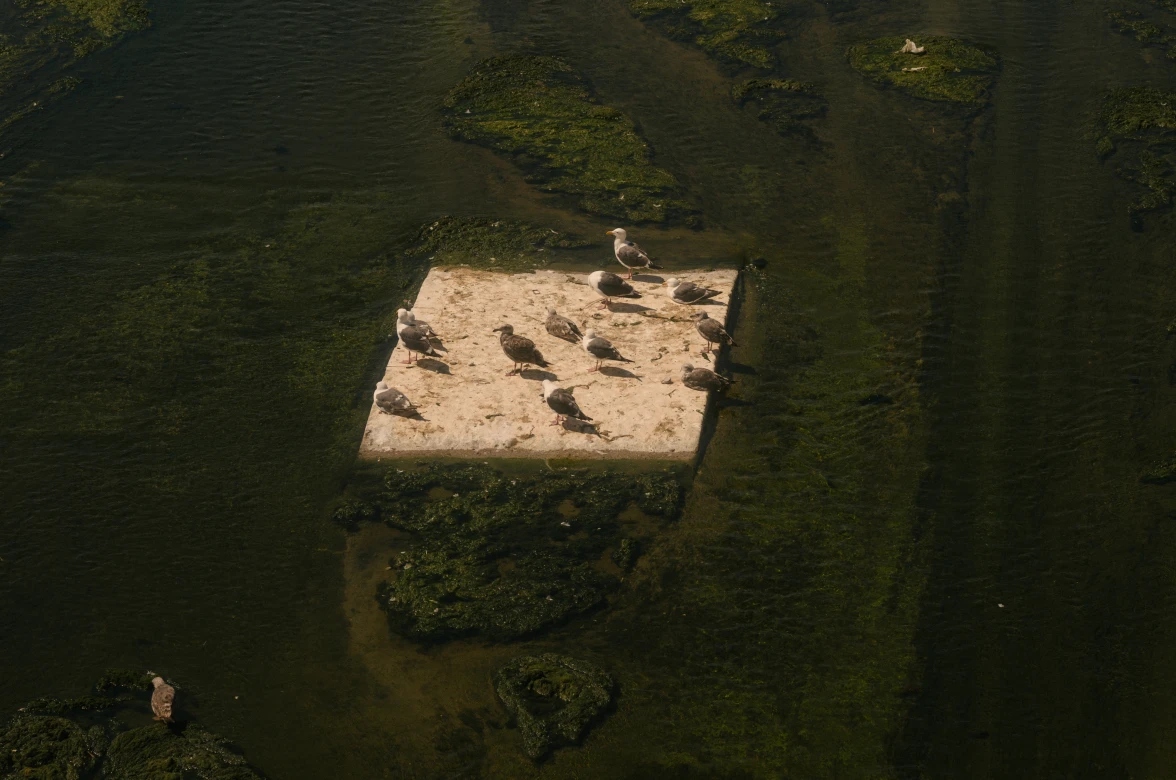
“It’s mind-boggling to sit here and see anyone try to defend this position when we’re all looking at these pictures with our eyes,” he added.
During closing statements, AQMD attorney Daphne Hsu said she understood the magnitude of shutting down the company. “We don’t ask a facility to stop operating lightly,” she said, noting Baker could have proposed a timeline to come into compliance. Instead, she said, the company chose to dispute the agency’s findings.
“Baker must be in compliance before it restarts,” Hsu added. “The community has waited long enough.”
The hearing board voted 4 to 1 to shut down Baker. That’s when the court battle began.
When AQMD implemented the odor mitigation rule in November 2017, rendering facilities that had to comply were given 90 days to meet basic standards. The goal of the rule was straightforward: to keep potential odor sources contained and protect people living nearby. The rule requires steps like washing down surfaces at least once a day and repairing cracks in the asphalt to keep pools of odorous bacteria from forming.
“As they’re bulldozing and pushing all these raw carcasses, [the animal remains get] smeared across asphalt and concrete, and odors start developing,” explained Wayne Nastri, AQMD’s executive officer, in an interview with LAist. “What the rule actually intended to do was to control the process the whole way, to minimize [animal remains’] exposure to the air that would generate those kinds of odors.”
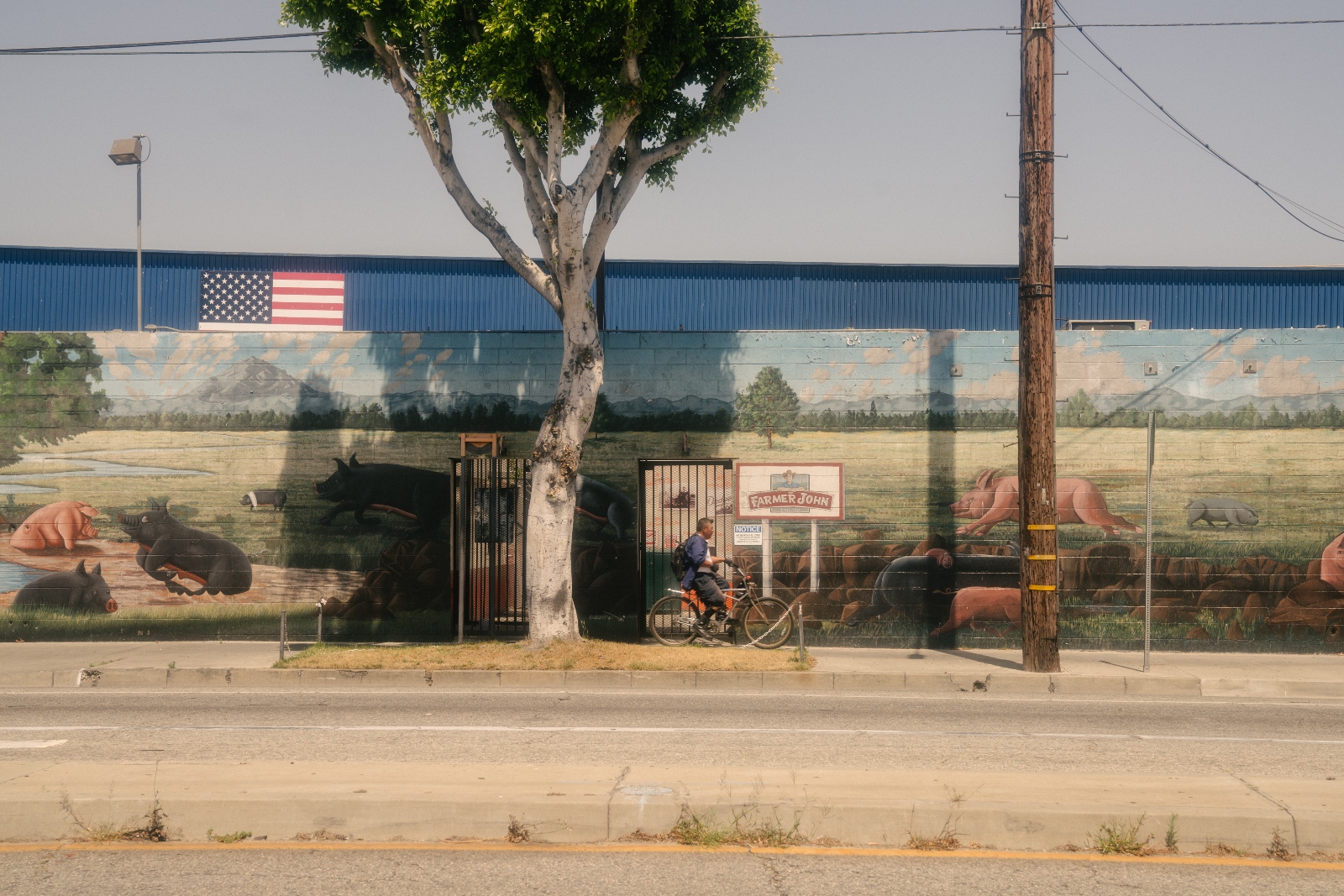
AQMD gave renderers subject to the rule up to three and a half years to install enclosures, or bring all their operations into a closed system indoors, to keep odors from drifting off site. Some asked for extensions before they finished the work, but, according to AQMD, Baker is the only one that has not complied. In its lawsuit, Baker repeatedly argues it is in compliance.
When Harris, the AQMD inspector, checked out Baker for the first time after the rule went into effect in 2018, he remembers being disgusted.
“I had to step away because I almost vomited,” he said in a sworn written statement filed with AQMD’s response to Baker’s lawsuit.
Recalling the inspections he conducted at Baker in 2022, Harris added that: “The odor at the facility smells intensely of rotting animals.”
His work boots, he explained, were so soaked through with the smell of rendering that he couldn’t use them at non-rendering facilities. In one of Baker’s rendering plants at its Vernon campus, he said “rotting odor emanates from all sides.”
L.A. County Supervisor Janice Hahn’s district includes Vernon — she advocated last year for Baker’s shutdown.
“It was clear that Baker Commodities had long violated air quality rules and had done little to nothing to come into compliance,” she said in an emailed response to questions from LAist. “It was time for [AQMD] to uphold the rules they had on the books and protect the community from this company.”
Nastri, AQMD’s executive officer, declined to speak on Baker’s lawsuit, citing pending litigation. Court filings show AQMD has hired two outside law firms to work the case, in addition to the agency’s in-house attorneys. They’ve filed a cross-complaint against Baker, demanding that the rendering company pay $10,000 per day for each of its violations.
Nastri confirmed to LAist that Baker has committed the most violations out of any of the rendering plants in its jurisdiction.

The air pollution agency’s rules “are there to ensure that we have a level playing field,” Nastri said. “And to all those companies that are making the investments, that are operating in conditions that they’re supposed to operate, it’s unfair if we were to let others who do not make those investments and seek to profit off of the lack of compliance — that’s just wrong.”
“We are very consistent and very strong in our enforcement approach,” he added. “And so long as those companies continue to violate those rules or regulations, we will go after them. Period.”
Residents of Southeast L.A. County, as well as Boyle Heights and unincorporated East L.A., have put up with rendering plant odors for years. And Baker is not alone — odor complaint records reviewed by LAist show the three other nearby rendering plants have also generated concerns.
So have other businesses. The city of Vernon is home to just 222 residents and is almost exclusively industrial — nearly 600 of its businesses handle or store hazardous chemicals, according to a city report. Local residents have lodged complaints with AQMD about strong garbage odors from trash collection companies, as well as nauseatingly sweet smells from flavor and fragrance suppliers. One resident complained their neighborhood reeked of “melting Jolly Ranchers.”

Shifting wind patterns near Vernon add to the challenges. According to Terrence Mann, AQMD’s deputy executive officer of compliance and enforcement, an odor can start off in Monterey Park, “then, just a few minutes later,” pop up in Huntington Park — about 11 miles away.
Interviews with local residents , as well as odor complaint data obtained through public records requests, show that people living in the area encounter the smells at dinner time; on their way to school; at work; on the playground; and during class.
Sometimes the stench comes and goes. But sometimes it persists for hours, or even several days. When it’s especially pungent, it can be stomach-churning. Community members also report getting headaches, as well as an itchy, burning sensation in their eyes and throats.
In interviews with LAist, affected residents often used phrases like “dead animal” or “rotting carcass” to describe these odors. Still, most of them have no idea where the stench comes from. Some local residents who’ve driven in Vernon past the now-shuttered Farmer John slaughterhouse, which is renowned for its pig murals, told LAist they’d always assumed the smell was coming from there.
“It wasn’t just that there was a smell — we all live in cities [that] have smells — it’s that it was a stench,” said Jackie Goldberg, Los Angeles Unified School District’s school board president. She fielded complaints from teachers and parents at schools near Baker and joined other elected officials in a letter demanding that rendering plants take greater accountability for odors in January 2022.
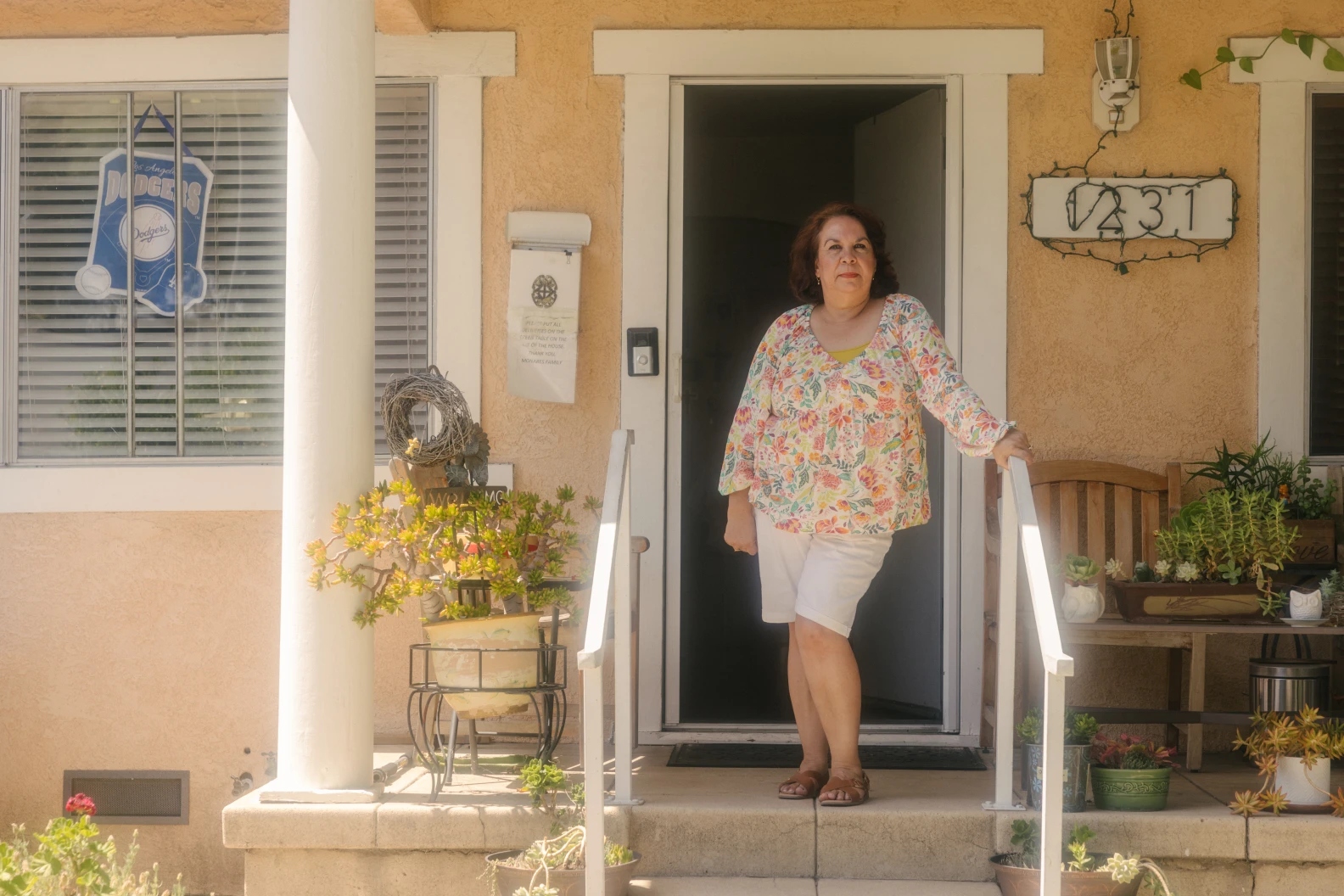
The smell was so bad it made it impossible to get through the day’s lessons, she said. Students were putting their heads down, asking to go home.
“It impacts your body,” she added. “You feel it in your eyes, you feel it in your throat, you smell it, you get headaches, your eyes burn. It’s not good for you, and it’s not good for kids in particular.”
In the months leading up to AQMD’s shutdown action, former state Assemblymember Cristina Garcia wrote her own letter to the agency, detailing her experience teaching math at Huntington Park High School in the ‘90s and early 2000s.
“The smell is so strong, putrid, and nauseating that my students could not focus,” she wrote. “[A]nd now, 20 years later, it is insulting that we are still dealing with the same problem.”
Without working air conditioning in her classroom, Garcia had to choose between shutting the door and windows to keep the odors out, or letting the stench in to get some ventilation. “And the hotter it got, the worse that smell would get,” she told LAist. “It was a constant struggle.”
Baker’s lawsuit was news to Garcia when she found out about it from LAist, but not a surprise. She said communities in Southeast L.A. have long been plagued by environmental justice issues and recalled that the now-shuttered Exide battery recycling plant spewed lead in the area for decades, then had its bankruptcy case settled in federal court.
“[Baker feels] that they could win and they could squeeze the agency on behalf of their bottom line, instead of on behalf of the public,” she said.
Dora Gómez and her two children have lived in the city of Vernon for eight years in an affordable housing complex built on land donated by the city. Gómez said the smells have been a persistent issue. When they occur, she shuts her windows and avoids going outdoors. She also bought an air purifier and has routinely purchased scented wax melts to ward off the stench.

Gómez had no idea four rendering plants circle her home in a 4-mile radius. She said she often thinks about leaving the area, but she pays less than $1,500 per month for a two-bedroom apartment and the rents in surrounding neighborhoods are not within her budget.
“It’s not a great place to raise your kids,” said Gómez, who said she worries about health effects from Exide in addition to the smell problems. Her apartment building has been flagged by the state Department of Toxic Substances Control for soil remediation after contamination from the battery recycling plant. “They’ve already been exposed to lead for all these years, it just makes you think like, you know, what else is in the air?
Maria Monares has lived in East Los Angeles, about 3 miles north of Baker’s pressers and grinders, for over three decades. Her children, who are now grown, attended Eastman Avenue Elementary School, just across the street from their home. Monares’ neighborhood has also been subject to rendering plant odors, a “horrible smell” that she compares to the stench of “death” and “burning bones.”
Aside from being unpleasant, the odors can be embarrassing, she said. Sometimes, the stench rolls in when she has company. Visitors will scrunch their faces in disgust and ask: ‘What is that?’
Over the years, Monares and her husband have lodged multiple complaints to AQMD. In some cases, the agency has sent inspectors out to her home. They’ve come, smelled what she’s smelling, asked questions, and taken notes. Then, the air quality got better. And when the odors returned, she and her husband got back on the phone.
“Us calling and bugging, hopefully it helps,” she said.
Businesses near Baker have also filed odor complaints with AQMD. Public records reviewed by LAist show that one company described a “horrible, putrid smell” that they said was coming from Baker. The “smell penetrates into our facility and many employees complain … Some feel nauseous,” it added.
But pinpointing an odor’s source can be difficult.
“The biggest challenge is that all of [the rendering companies] are located in close proximity to each other,” said Mann, with AQMD. “That’s part of the reason why our agency took the lead and created [the odor mitigation rule implemented in 2017],” he said, explaining that the agency now aims to proactively identify violations at rendering companies instead of waiting for complaints to come in before it takes action.
Nastri, AQMD’s executive officer, noted that, in recent years, there’s been an overall drop in odor complaints associated with rendering plants in the region. In 2021, he said, AQMD received nearly 400 complaints. As of Oct. 2, the agency reported 84 complaints so far this year.
Still, he added, “success would be the ultimate elimination of those complaints.”
Agriculture industry experts agree that rendering plays an important role in reducing waste. Humans don’t eat every part of the animals they consume, so “a tremendous volume of unused animal meat gets left over from our livestock and our poultry operations,” said Christine Birdsong, undersecretary at the California Department of Food and Agriculture.
By repurposing animal remains — like using fats for biodiesel, instead of extracting carbon from fossil fuels — renderers across the country “reclaim the carbon” from 56 billion pounds of unused animal parts each year, Birdsong added. Renderers also minimize waste by transforming those remains into a myriad of “really valuable ingredients” used in everything down to the gelatin casings of medicine capsules, she said.
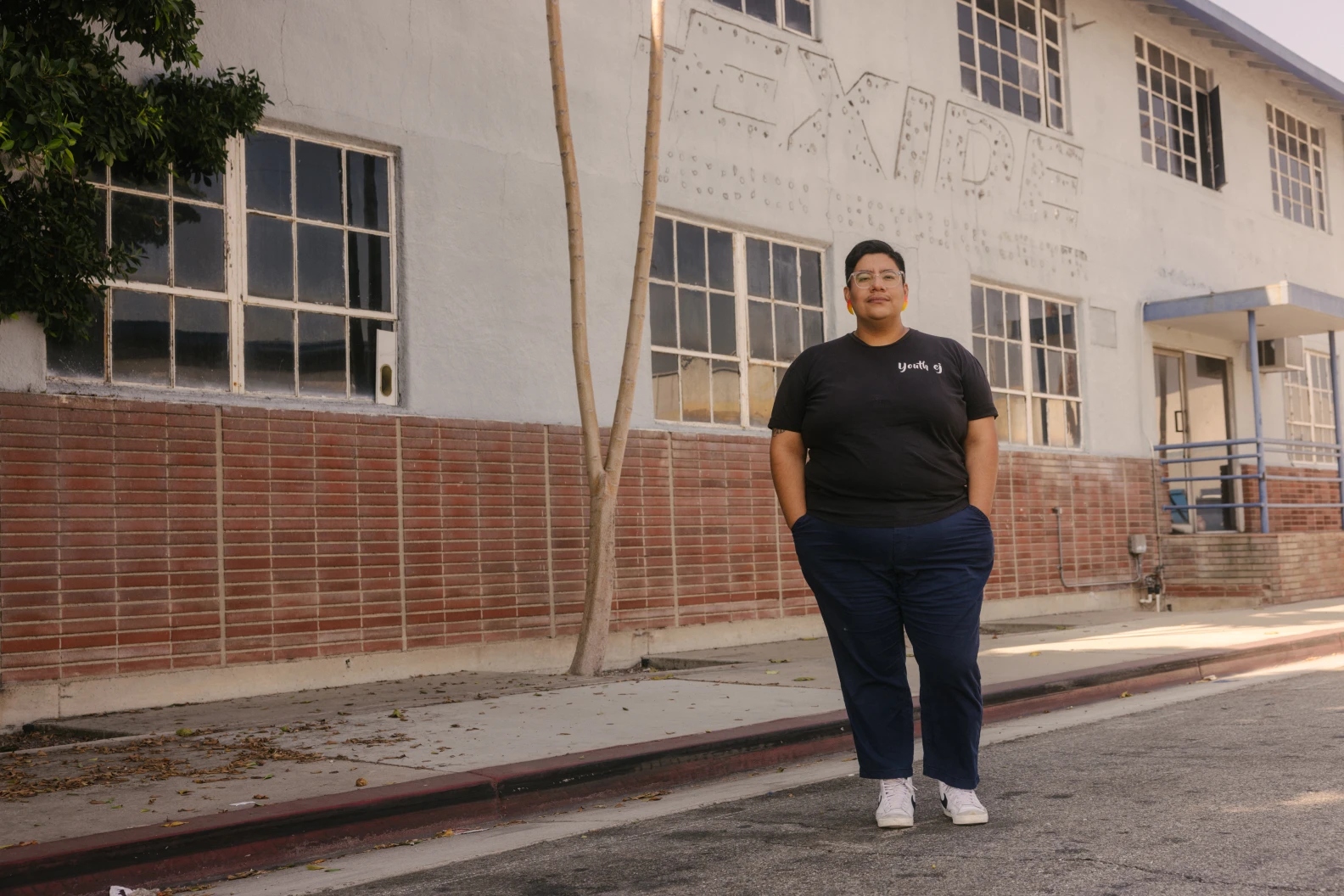
“I have never seen any other industry that is more involved in recycling,” said Frank Mitloehner, a professor and air quality specialist at UC Davis’ animal science department. “I mean, literally, nothing goes to waste.”
Mitloehner said rendering plants are especially significant when livestock farms experience mass die-offs, often due to the spread of disease or extreme heat. “You’re not allowed to compost [animals], you’re not allowed to burn them. There’s no other way of dealing with that,” he said.
“Thank God we have people to work in [rendering plants],” Mitloehner added. “Because if we didn’t, we would have a serious disposal issue.”
Some community members frustrated with rendering odors don’t dispute the importance of the recycling work that’s done at Baker.
Dilia Ortega grew up in Huntington Park and now lives in South Gate. She works as a youth program coordinator for Communities for A Better Environment, a nonprofit that’s advocated for clean air, soil, and water in California’s working-class neighborhoods since the late 1970s.
Ortega grew up smelling rendering odors. On her way to school, she’d instinctively cover her mouth and nose when her bus drove past Vernon. Today, her role at work puts her in contact with hundreds of students in Southeast L.A. Year after year, she told LAist, they identify dead animal smells as an ongoing issue in their neighborhoods.
When AQMD was weighing whether to shut down Baker last fall, Ortega shared these insights during public comment at the three-day hearing. She underscored that she was not advocating for a permanent closure. She just wants the company to abide by the rules.
“We understand that they provide a necessary service,” she said. “But it cannot be done at the expense of our quality of life.”
Jill Johnston, associate professor of Population and Public Health Sciences at USC, noted that strong odors don’t just diminish local residents’ quality of life, they can also impact their health.
Rendering plant emissions can contain chemicals like hydrogen sulfide, which smells like rotten egg, as well as chemicals that contain sulfur dioxide, she said. Some of the symptoms community members have reported — including itchy eyes and runny nose — can be caused by these chemicals. Rendering plant emissions can also exacerbate asthma symptoms, making it harder for residents to breathe, and elevate their blood pressure, Johnston said. Chronic exposure to these odor producing chemicals can also affect their cardiovascular systems.
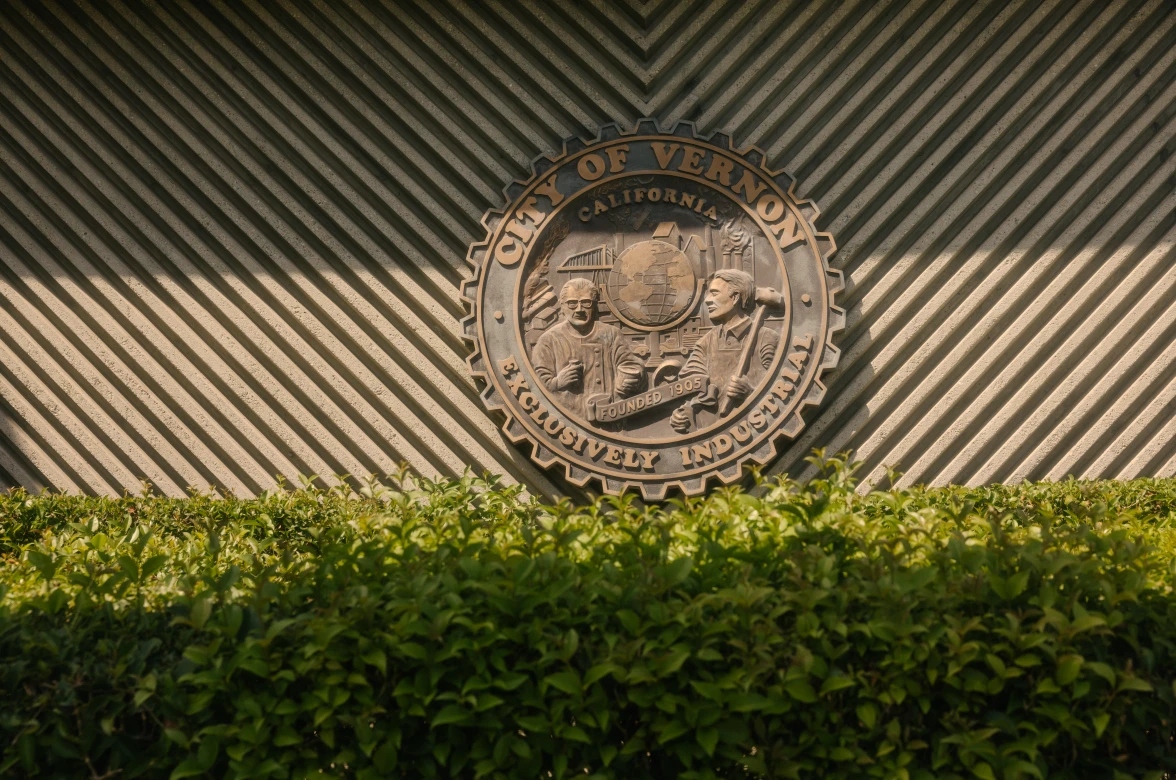
We shared our findings regarding Baker with Johnston, including what we learned through interviews with community members and our review of AQMD’s violation records.
She said they point to “the need for more stringent enforcement of the standards, to ensure that these violations don’t persist.”
Johnston said the density of meat-related facilities in the region is also concerning and could pose a “potential cumulative burden” on nearby communities.
“Even if everyone individually is in compliance,” she explained, “when you’re exposed to so many, the health effects can be greatly amplified.”
Eleni Sazakli, a researcher at the University of Patras’ public health laboratory in Greece, specializes in studying the impact of rendering plants on local communities. She noted that odors can disrupt lives and social relationships. Even hanging laundry out to dry becomes an issue, because the wet cloth picks up the smell, she said.
Odorous chemicals produced by rendering plants can also irritate the throat and nose and “produce headaches, nausea, fatigue and sleep disturbances,” Sazakli added. Some even have the potential to cause cancer.
Pointing to the role rendering plays in reducing waste, Sazakli nevertheless maintained that rendering is “an environmentally friendly industry” that should be sustained.
“But we have to follow very strict guidelines in their operation,” she added, and “adopt the best available technologies that we have in our hands.”
In its suit against AQMD, and on its company website, Baker warns that the shutdown could impact “about 200 people,” including “more than 100 union-represented employees.”
But when Baker asked AQMD’s hearing board for permission to resume its trap grease and wastewater treatment processes in April 2023, the company’s Jason Andreoli said no staff had been cut.

“[W]e haven’t even let go of any of our employees,” he said at the hearing. “These people are family. ”
Bertha Rodríguez, a spokesperson for United Food and Commercial Workers Local 770, confirmed that none of the 32 union members employed by Baker have lost their jobs.
Martin Perez, who works for Teamsters Local 63 and started a petition to reopen Baker, also told LAist that none of its members have been laid off. During the April hearing he said Baker had been good to its employees.
“Not only did they pay their wages, they paid their health and welfare [and] their pension contributions,” he said at the time.
The International Union of Operating Engineers Local 501, which also has union members who work at Baker, did not respond to multiple requests for comment.
LAist posed the question of jobs to Goldberg, Los Angeles Unified’s school board president, and four Southeast L.A. officials who all complained to AQMD about rendering odors. All agreed that jobs are important. All maintained that the plants need to be in compliance.
“We did not want [Baker] to close, because it employed many of the people that I represent,” Goldberg said, referring to her role on the school board. “But we did want them to run their business following the regulations that they’re required to.”
“I would love to see it reopen,” she added, “but I don’t want it to reopen if they’re not going to be closely monitored and closely regulated.”
Rendering companies “need to adhere to the established regulations,” said South Gate mayor Maria del Pilar Avalos, who lives about 6 miles from Baker. When the rendering odors have been especially pungent, they’ve made her eyes burn. They’ve also caused her family members to forgo day-to-day activities, like walking their dog, she said.
Still, Avalos believes the rendering companies and local residents can coexist. “We need to see how we can utilize our 21st century technology to address those quality of life issues, so that it’s a win-win for the companies as well as for our communities,” she said.
In response to community concerns, Vernon’s website says the city is considering steps to strengthen local control over rendering. These include plans to enact a moratorium on building new rendering plants, along with increased fines for facilities that are not in compliance with AQMD’s odor mitigation rule.
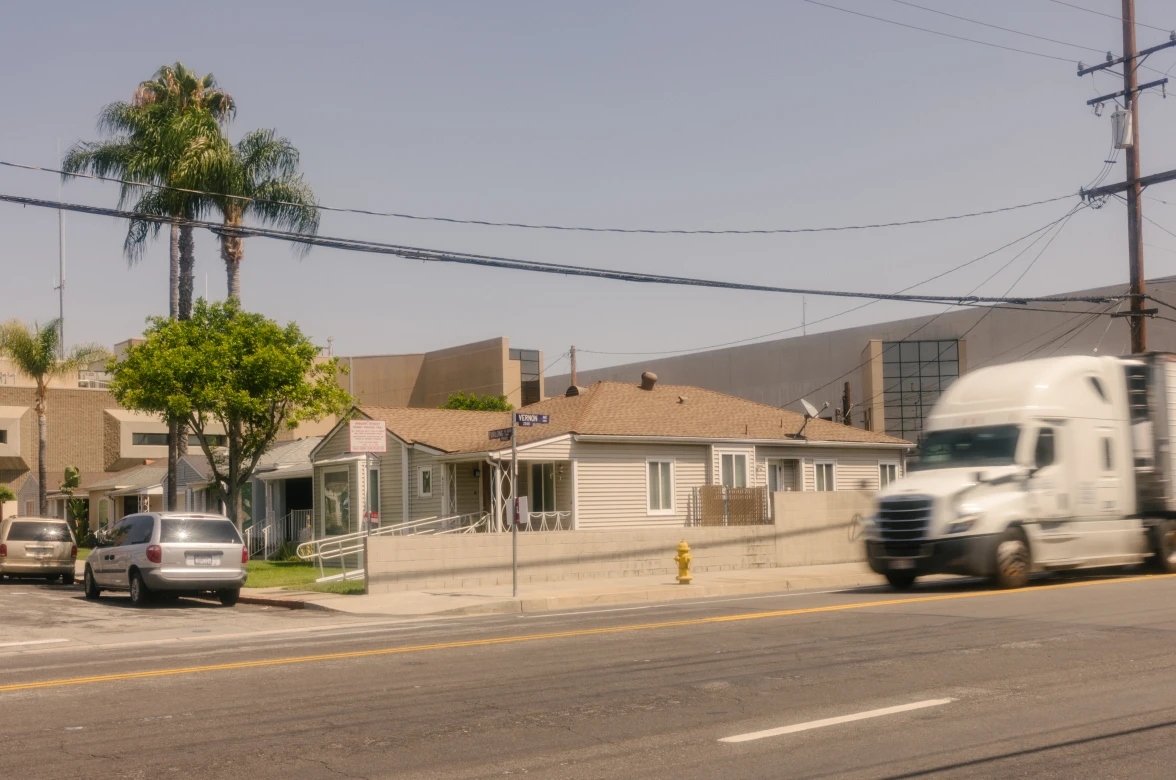
But Angela Kimmey, deputy city administrator, said the city won’t be enacting the moratorium. The other plans are in “various stages of development,” she said. Vernon aims to encourage business growth and demonstrate that rendering plants and local residents can coexist. To this end, Vernon hosted a tour of a rendering company that’s in compliance with AQMD last summer, inviting regional and southeast L.A. elected officials to come along.
Vernon is also focused on helping facilities come into compliance, Kimmey said.
Vernon Mayor Crystal Larios added in an emailed statement that the city wants “to support our business community,” but recognizes that it has to do its part to shift toward supporting greener commerce, like data centers, green hydrogen, and the electrification of transportation.
“These types of green commerce will not only help existing businesses sustain future growth but heavily reduce the impact on air quality, minimize the number of trucks, and overall decrease the carbon footprint,” Larios said.
LAist requested an interview with Larios multiple times over a four-week period but received no response. Kimmey, who relayed the emailed statement, said the mayor was unavailable.
Hahn, the L.A. County supervisor whose district includes Vernon, told us she was disappointed to see that Baker hasn’t used available state funding to build enclosures that would contain the smells and protect community members from exposure.
Baker “doesn’t seem to think the rules should apply to them,” she said.
“We need the South Coast AQMD to be strong and hold companies accountable,” Hahn added. “I think it is important for residents in Southeast L.A. to know that, unfortunately, this fight isn’t over.”
The Jane and Ron Olson Center for Investigative Reporting helped make this project possible. Ron Olson is an honorary trustee of Southern California Public Radio. The Olsons do not have any editorial input on the stories we cover.
This story was originally published by Grist with the headline The fight over a facility that recycles dead animals in Los Angeles on Oct 18, 2023.
Students at some schools are loading their plates with fresh items from a salad bar….
The post Encourage Your School To Offer More Meat-Free Options appeared first on Earth911.
According to a new study by researchers at the Netherlands’ Utrecht University and the University of California, Irvine (UCI), the rate at which Greenland’s surface ice has been melting has increased in recent decades, while surface ice melt in Antarctica has slowed.
For the study, the researchers examined the role that katabatic and Foehn winds — downslope gusts that bring dry, warm air rushing to the tops of glaciers — play in the melting of Greenland’s ice sheet. They said that, in the past decade, melting related to the winds has increased more than 10 percent in Greenland, but their impact on Antarctica’s ice sheet has gone down by 32 percent.
“We used regional climate model simulations to study ice sheets in Greenland and Antarctica, and the results showed that downslope winds are responsible for a significant amount of surface melt of the ice sheets in both regions,” said co-author of the study Charlie Zender, UCI professor of Earth system science, in the press release. “Surface melt leads to runoff and ice shelf hydrofracture that increase freshwater flow to oceans – causing sea level rise.”
The study, “Wind-Associated Melt Trends and Contrasts Between the Greenland and Antarctic Ice Sheets,” was published in the journal Geophysical Research Letters.
Though the winds’ impact was substantial, Zender said the earmarks of global warming were having contrasting influences in the Southern and Northern hemispheres.
Surface melt due to the wind was being exacerbated by Greenland “becoming so warm that sunlight alone (without wind) is enough to melt it,” Zender said.
Warmer surface air temperatures, along with the 10 percent increase in melt driven by the wind, have resulted in 34 percent more total surface ice melt. Zender attributes this partially to global warming’s influence on the index differential of sea level pressure, the North Atlantic Oscillation (NAO).
NAO’s shift to a positive phase led to below-normal high latitude pressure, which brought warm air to Greenland and other areas in the Arctic.
On the other hand, since 2000, Antarctica has seen a decrease in total surface melt of about 15 percent. The reduction is due in great part to the Antarctic Peninsula having 32 percent less wind-generated downslope melt in the same area where two ice shelves collapsed.
Zender pointed out that the ozone hole in the Antarctic stratosphere, discovered in the 1980s, is still recovering, providing the surface with temporary insulation from additional melt.
“The ice sheets in Greenland and Antarctica keep over 200 feet of water out of the ocean, and their melt has raised global sea level by about three-quarters of an inch since 1992,” Zender said in the press release. “Although Greenland has been the No. 1 driver of sea level rise in recent decades, Antarctica is close behind and catching up and will eventually dominate sea level rise. So it’s important to monitor and model melt as both ice sheets deteriorate, including the ways climate change alters the relationship between wind and ice.”
The post Greenland’s Ice Sheet Surface Melt Is Accelerating While Antarctica’s Slows Down, Study Finds appeared first on EcoWatch.
Sea-level rise due to climate change is becoming an increasing concern for island nations and low-lying areas, such as Miami-Dade County, Florida.
The primary focus of research on sea-level rise has been the direct effects of flooding, but a new study also considers socioeconomic vulnerabilities.
The study found that, in the coming decades, four out of five Miami-Dade County residents could face displacement or disruption due to sea-level rise, whether or not they live in a flood zone, a press release from the Lamont-Doherty Earth Observatory at Columbia Climate School said.
The researchers concluded that, as inundation increases, lower-income residents will bear the brunt of a lack of habitable areas and skyrocketing housing prices. A small percentage of affluent residents will have the means to move from waterfront or low-lying properties, but others may have no choice but to stay, according to the study.
“Most studies focus on the direct effects of inundation,” said Nadia Seeteram, lead author of the study and a postdoctoral researcher at Columbia’s Lamont-Doherty Earth Observatory, in the press release. “Here, we were able to look at flooding on a very granular level, and add in other vulnerabilities.”
The study, “Modes of climate mobility under sea-level rise,” was published in the journal Environmental Research Letters.
The researchers looked at a combination of rainfall, storm surge and projections of flooding caused directly by sea-level rise that went from building to building, as well as demographic data, in determining the effects on residents, the press release said.
The team used data from the U.S. Census Bureau along with flood maps to chart the social and economic factors that would lead to residents being more or less vulnerable. These included age, income, employment status, race, education level, whether they were homeowners or renters and other factors.
The population was then divided into four categories. The first and most common were those residents facing sea-level rise of one meter, considered a “middle-of-the-road” possibility by the year 2100. This scenario would affect 56 percent of residents who live mostly on higher ground. The researchers called this portion of the population “displaced,” saying they could be faced with pressure to relocate.
The next most common group — 19 percent — were those living in perpetually flooded areas without the means to move to higher ground. The research team called this portion of the population “trapped.”
Another 19 percent of residents were those considered “stable” because they lived in areas that weren’t prone to flooding and were able to stay.
The wealthiest percentage of the population, the seven percent the team called “migrating,” would be subjected to flooding in low-lying or waterfront areas, but would be able to relocate to safer metro area locations.
“However, social and economic risks may extend to communities substantially beyond flooded areas as the spatiotemporal dynamics of flood risks are realized through housing markets, insurance and risk-transfer mechanisms, and adaptation investments,” the study said. “Notably ‘climate gentrification’ and affordable housing shortages can result from increasing demand for housing in safer areas. Furthermore, disaster-related displacement and declining property values and household wealth from [sea-level rise] and extreme flooding have the potential to exacerbate existing social inequity.”
The research team said that beyond a meter of sea-level rise would mean direct flooding, rather than economic pressures, would become the main factor affecting the population.
Two meters — a “fairly high” estimate — would cause inundation for more than half the population from more rainfall and sea-level rise. This would lead to 49 percent of residents becoming trapped and a quarter displaced. Just eight percent would be classed as stable.
“This is where it gets to be more drastic, more existential,” Seeteram said in the press release.
Seeteram said both scenarios would mean the potential for depopulation and devaluation of flooded properties. This could make it harder for tax collection by authorities to fund infrastructure adaptation to hold back flood waters.
Flooding is already a routine occurrence in the area, as rain collects in the streets and high tides come up through sewers. Seeteram said during the wet season from May to October, flash flooding is common.
Signs of climate gentrification have already begun, with property values and development in a neighborhood 10 lofty feet above sea level called Little Haiti soaring. The predominantly Black residents of the neighborhood fear they may be forced to move.
“I suspect it is already happening,” said co-author of the study Katharine Mach, who is University of Miami’s chair of the Department of Environmental Science and Policy, in the press release.
Mach said other factors may be more responsible for changing real-estate values at the moment, such as already established pro-development policies.
“The question is, what fraction [of rising prices] can you put on climate?” Mach said.
Mach added that waterfront and low-lying areas are seeing increased real-estate prices, while locations less prone to flooding aren’t going up as quickly, which may indicate that buyers’ decisions are being affected by predicted rises in sea levels.
Seteeram said the study’s projections might not happen, but it depends on how the city deals with these issues in the future. The effects of sea-level rise could be tempered with measures like infrastructure modification.
“We could see different kinds of housing development, to make the population denser in some areas, or more climate resilient. But then you would have to see what the intersection would be with affordability for a lot of people,” Seteeram said in the press release.
The post Sea Level Rise Will Affect 4 Out of 5 Miami Residents, Even Those Living Outside of Flood Zones, Study Says appeared first on EcoWatch.
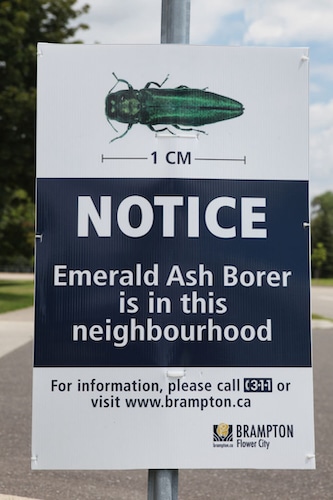
Whether an animal, a plant or a microbe, an invasive species generally describes a living thing that has not historically lived in a given region. An invasive species by definition has a decidedly negative ecological or economic impact on the habitat it has entered, according to the U.S. Department of Agriculture. That could be because it lacks natural predators in the area, so it eats a lot of prey that other native predators in the ecosystem rely on. Or perhaps it crowds out other species for space or necessary resources, killing off a vital crop that regional farmers sell.
An invasive species, as described by the USDA, is one that was likely spread by human activity — not one that naturally migrated or adapted to a new area.
While some non-native species have a devastating effect once they are introduced to an ecosystem, and thus rise to the definition of invasive species, most do not. And not everyone agrees as to whether we should be classifying any species as “invasive” at all.
That controversy lies in part with the definition of what is native or not. Centuries of European colonization and exploration brought new species, intentionally or otherwise, to new lands. Plants and animals that feel distinctly, inextricably American — like apple trees and house cats, for example — were brought to what is now the United States, but attempts to remove or eradicate those from the country would likely face backlash.
Plus, as the climate changes, the related environmental impacts will influence where species are able to survive. Temperature bands are already shifting, forcing creatures to migrate into new territory they otherwise may not have ventured into if conditions in their former habitat were still amenable to them. That makes it tricky to categorize what is or isn’t a native species, which could result in whether conservation measures are taken in that species’ favor as the climate crisis continues. Because of this and other forces pushing wildlife out of their current territory span
Another concern expressed by experts is that the focus on the purity of native species and ecosystems echoes nativist thinking and racial purity ideologies, according to Vox.
Meera Iona Inglis, a professor of animal and environmental ethics at Newcastle University, argued in a 2020 paper that “we should discard the term ‘invasive species’ and instead use the term ‘potential problem species’ to describe species which appear to be causing harm in a given time and place,” noting that part of her philosophy stems from the “parallels between the portrayal of animal and human immigrants as dangerous invaders.”
Non-native species have the potential to harm native wildlife and plant species by outcompeting them for critical resources like prey and habitat or by overly consuming them in the case of prey species without suitable defense mechanisms. Although natural selection means that species can’t just survive or thrive unless they have evolved to earn a niche in their ecosystem, invasive species may have traits that give them a major evolutionary advantage over species in the native ecosystem. That would put native species at a severe disadvantage, considering they likely couldn’t evolve or adapt quickly enough to ward off the threat. And if an invasive species is able to both outcompete native predators and eat more than their share of species that are lower on the food chain, they could reduce the biodiversity of an area with relative speed.
Other invasive species may end up destroying the ecosystem itself. The emerald ash borer, a type of beetle that likely came from Asia via wood packing material, has killed hundreds of millions of ash trees across North America as its larvae eat the trees’ inner bark, according to the Emerald Ash Borer Network, which is affiliated with Michigan State University.

The threat of invasive species also can look like the importation of diseases that native species aren’t equipped to fend off. According to the National Wildlife Federation, one type of introduced elm bark beetles is an efficient vector of Dutch elm disease, which since 1930 has spread through these beetles “from Ohio through most of the country, killing over half of the elm trees in the northern United States.”
By definition, invasive species aren’t beneficial to an introduced ecosystem. But again, non-native species aren’t necessarily harmful — meaning they have the potential to be beneficial within new ecosystems. Some non-native trees provide shelter for local pollinators or migrating birds, while some non-native wildlife can increase the amount of food available for native predators, according to The New York Times. And a 2022 study in the journal Science noted that when populations of native, seed-dispersing species are threatened, non-native species can help to disperse seeds instead.
The United States Geological Survey, an agency of the U.S. Department of the Interior that conducts invasive species research, notes that “more than 6,500 nonindigenous species are now established in the United States,” although that number is not necessarily the number of invasive species, i.e., potentially harmful species. Here are five that are known to be causing harm in ecosystems in the U.S. to which they have been introduced.

Burmese pythons are native to several Asian countries, including India, China and Malaysia. But during an explosion of the U.S. exotic pet trade in the 1980s, according to the History Channel, Burmese pythons were imported for pets, often destined for South Florida homes — but the 20-foot-long snakes don’t make good pets and were often dumped by their owners once they became difficult to keep.
Those snakes soon reproduced in the swamps across the region. Without native predators, the Burmese python has been tied to the decimation of many native species of mammals, birds and reptiles. Attributing the decline to the growth of the Burmese python, the U.S. Geological Survey notes that “raccoons [have] dropped 99.3%, opossums 98.9%, and bobcats 87.5% since 1997” in the southern portions of the Everglades National Park.
“While pythons will eat common native species and nonnative species such as Norway rats, they can also consume threatened or endangered native species,” including endangered Key Largo wood rats, explains the Florida Fish and Wildlife Conservation Commission.
Several species of carp are considered invasive, including bighead, black, grass and silver carps, according to the U.S. Geological Survey. The fish were intentionally introduced in the 1970s to the U.S. to help control algae blooms and for human consumption, but the agency explains that the fish “escaped confinement and spread to the waters of the Mississippi River basin and other large rivers like the Missouri and Illinois.
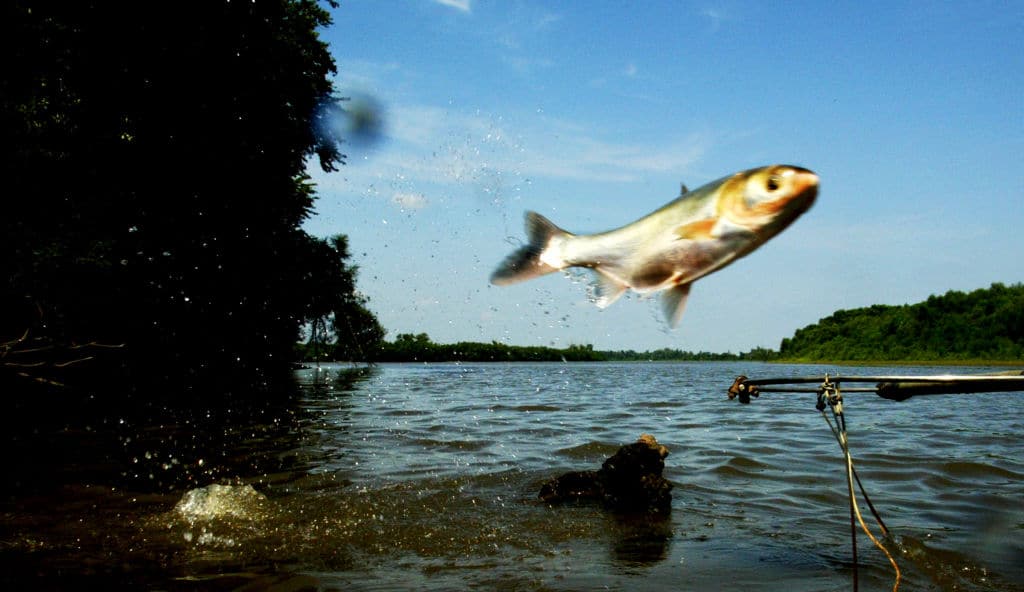
Now, the invasive carp populations have exploded, reducing the amount of food and habitat available for aquatic species native to the area — which in turn makes it harder for commercial and recreational fishers to catch what they want.
“As filter feeders, [different invasive carp species] consume the base of the aquatic food chain, starving out and outcompeting native fish species,” explains the National Wildlife Federation on their website. “Additionally, silver carp become a safety hazard to boaters and anglers on waters they inhabit, leaping feet out of the air and weighing up to 40 pounds.”

Originally from China, the U.S. Department of Agriculture’s Animal and Plant Health Inspection Service says that the spotted lanternfly was first found in the U.S. in 2014 and has since spread to 14 states. Currently considered to be more of an agricultural threat than an ecological one, spotted lanternflies are known to feed on fruiting trees, including apples, cherries, peaches, plums and walnut trees, as well as other crops like grapes and hops.

Water hyacinths — a leafy, aquatic plant with light purple flowers — were introduced for ornamental purposes in the U.S. in the late 1880s from South America’s Amazon Basin. But according to the National Invasive Species Information Center, the freshwater plant also “forms dense colonies that block sunlight and crowd out native species.” The University of Florida’s Center for Aquatic and Invasive Plants finds that this blanketing effect makes human water activities “impossible” once they move into an area. The water hyacinth has made its way across two-thirds of the U.S., but Florida has been able to keep the plant’s abundance under control.
Invasive species aren’t just an ecological concern; they can also cause strong economic problems. Spotted lanternflies, for example, threaten Pennsylvania’s grape, apple and stone fruit industries, as well as its pine and hardwood logging sector. Those industries account for billions of dollars of sales and economic activities in the state, according to the Invasive Species Centre, based in Canada.
Another example can be found in the case of the zebra mussel. Originally from the Black and Caspian seas, the zebra mussel has proliferated across the Great Lakes region, according to the Cary Institute of Ecosystem Studies. In addition to its voracious appetite for critical prey species — namely, plankton and microzooplankton — that threatens or endangers native mussel and other aquatic species, the zebra mussel attaches en masse to water intake pipes and industrial equipment, causing damage.

Preventing species that are known to harm local ecosystems from entering the region is key to reducing their harm. The U.S. Department of Agriculture notes that invasive species can hitch a ride to new destinations on imported cargo and commercial shipments, in addition to passenger vehicles, in addition to ocean containers, aircraft, rail cars and commercial trucks. Checking personal vehicles and clothing for plants, seeds or wildlife before traveling between regions can help reduce invasive species contamination.
Once a harmful non-native species appears in a new area, there are different ways that nonprofits, governmental agencies, communities and even commercial entities opt to eradicate before the creature can cause problems or further existing concerns. In areas where lionfish have become invasive, for example, hunting competitions are held to catch and kill them for both sport and for consumption. Whole Foods even sells lionfish in some of its stores, noting on its website that the Monterey Bay Aquarium’s Seafood Watch considers the fish to be a “best choice” for consumption because of their invasive species status. And spotted lanternflies have been the subject of informational campaigns encouraging people to squish them on sight.
Some observers of the invasive species conundrum debate the ethics of culling creatures because of their potential for injurious behavior in their introduced habitat. People for the Ethical Treatment of Animals, or PETA, has condemned decapitation that is allowed during contests to kill an invasive python species. However, the organization doesn’t necessarily believe that all invasive species should be allowed to remain in the introduced environment, proclaiming that house cats should never be allowed outside because of their outsized impact on native wildlife.
In places where invasive plant species have begun to take root, volunteer events are sometimes held to teach community members which species are harmful and should be removed, as well as how to safely dispose of them. To find such events in your community, reach out to local extension schools, nature clubs or environmental agencies to understand what the options are — or use an internet search engine to seek out “invasive species removal projects in” your area.
The post Invasive Species 101: Everything You Need to Know appeared first on EcoWatch.

Meeting the Biden administration’s goal for the United States to be a net-zero greenhouse gas emitter by 2050 is a monumental challenge that must be tackled at an even more daunting pace. But the nation’s top scientists envisioned that future and laid out a plan for realizing it in a report released on Tuesday.
In a sweeping 637-page document, the National Academies of Sciences, Engineering, and Medicine made 80 recommendations for how the United States can justly and equitably pursue decarbonization policies. It includes recommendations for everything from establishing a carbon tax to phasing out subsidies for high-emissions animal agriculture and codifying environmental justice goals.
“This report addresses how the nation can best overcome the barriers that will slow or prevent a just energy transition,” said Stephen Pacala, a professor of ecology and evolutionary biology at Princeton University and chair of the committee that authored the latest findings, which build on an earlier report released in 2021. He added that only about a quarter of the recommendations require congressional action, with many being targets at private institutions and federal agencies. There is also a recognition that some changes are unlikely to happen immediately.
“Do we think Congress will go out and pass this? No,” he said. “But maybe a future Congress will.”
The hope is that these recommendations can eventually help further solidify the impacts that legislation such as last year’s Inflation Reduction Act and the 2021 bipartisan infrastructure law are expected to have.
“Congress has invested a fair amount of our money in this transformation … but the committee sees multiple hurdles that impair the effectiveness of those starting funds,” said Ed Rightor, another author of the report and the former director of the Center for Clean Energy Innovation at the Information and Technology and Innovation Foundation. For example, it found that “perhaps the single greatest risk to a successful energy transition during the 2020s is the risk that the nation fails to site, modernize, and build out the electrical grid.”
Authors call on policymakers to alleviate such roadblocks with steps like reforms to the permitting process that would accelerate the building of transmission lines, as well as expand existing programs such as the weatherization-assistance program that helps people make their homes more energy-efficient. They also call for broader changes to the United States’ approach to combating climate change, including establishing a national greenhouse gas emissions budget.
None of these ideas are necessarily new, said Jamal Lewis, a state and local policy director for the electrification nonprofit Rewiring America. But he says the comprehensive approach makes for a particularly robust roadmap, and the National Academies could lend weight to policy pushes that are already in progress.
“The National Academies is a highly respected and authoritative voice,” said Lewis, adding that he liked that the authors looked at decarbonizing across different sectors of the economy. “All of these actions do, and need to, work together to help us achieve our climate goals.”
This story was originally published by Grist with the headline Scientists lay out a sweeping roadmap for transitioning the US off fossil fuels on Oct 17, 2023.
There are many reasons to not eat some foods, and the intelligence of the animal…
The post We Earthlings: Do an Octopus a Favor appeared first on Earth911.
Despite major efforts like the European Union’s new law to prevent deforestation, forests are disappearing…
The post Is the Miyawaki Method the Answer to Deforestation? appeared first on Earth911.